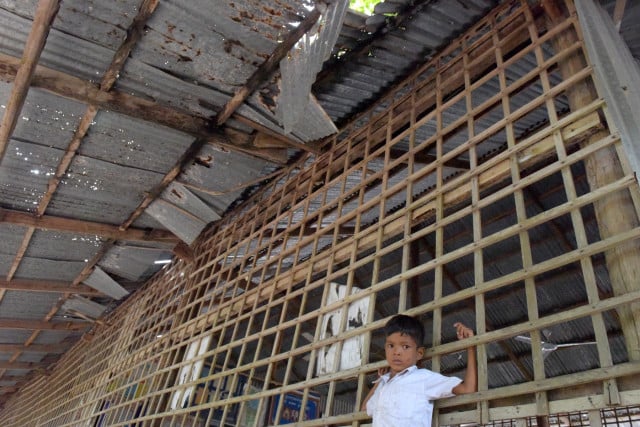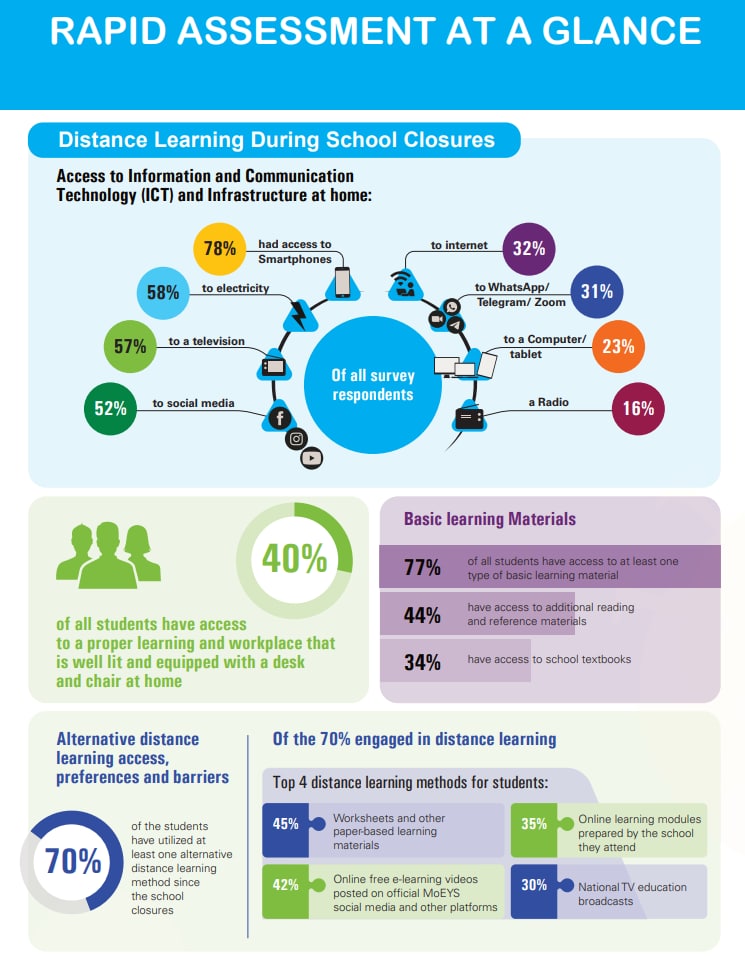Alarm Raised Over COVID Remote Teaching

- By Phoung Vantha
- September 20, 2022 11:35 AM
PHNOM PENH – Remote learning strategies in low and middle income countries during the COVID-19 pandemic were typically not effective, says a global report citing what it calls learning poverty in Cambodia.
The report suggests that during school closures, children in these countries learned on average only 5 to 20 percent of what they usually learn while schools were open.
The report, The State of Global Learning Poverty 2022 Update, gave Cambodia a learning poverty ranking of 90 for 2019, before the pandemic. The poorest value on the scale is 100.
Learning poverty means the share of 10-year-olds who cannot understand a simple text.
Cambodia got a similar score for learning deprivation, defined as the share of children at the end of primary who read at below the minimum proficiency level.
Schooling deprivation, the share of primary aged children who are out of school, was put at 9.3.
The report says also that a child born today in Cambodia could expect to reach only 49 percent of its potential productivity as a future worker.

According to the survey of education ministries by UNESCO, UNICEF, World Bank and OECD, even students who were able to receive some distance education often spent much less time learning than if they would have during in-person instruction.
They were exposed to teaching methods and curricula that had been hurriedly adapted to remote learning. Teachers often did not receive adequate training in remote instruction and digital skills.
The report says, "The magnitude of the learning challenge in the developing world is immense, and it is now even larger than before as a consequence of the pandemic.
"Since the onset of COVID-19, the school closures and disruptions caused by the pandemic have likely driven learning poverty rate much higher still."
It says simulations for 2022 based on the most up-to-date data and evidence on learning and the impacts of the pandemic suggest global learning poverty in low and middle-income countries has surged to an estimated 70 percent.
"Because universal foundational skills are essential to the flourishing of individuals and societies, this widespread learning poverty threatens to undermine the future of today’s children and the economic prospects of their countries," it says.
"Concerted action against learning poverty is urgently needed now, with every society prioritizing the welfare of today’s children and youth. To safeguard the future, it is essential to make this a turning point."
The report follows an assessment of distance learning in March 2021 by the Ministry of Education, Youth and Sport.
Among its findings were that 78 percent of students had access to smartphones at home but only 32 percent could access the internet. Just 58 percent had electricity and 57 percent a television.
Messaging and video services such as Zoom, WhatsApp and Telegram were available to 31 percent of children and 23 percent had a tablet or computer.
A separate Unicef Cambodia education report citing figures from 2017/18 said many girls and boys were falling behind, particularly in poor rural and urban areas.
"Cambodia has made terrific progress in educating its children. Since 2007, the number of children enrolled in preschool programmes has more than doubled," it says.
"The number of children enrolled in primary education has increased from 82 per cent in 1997 to over 97 per cent in school year 2017/18.
"While progress is tangible, children in Cambodia are still failing to reach learning standards appropriate for their age.
"At the primary level, nearly 25 per cent of children in Grade three cannot write a single word in a dictation test. Only 27 per cent of 3 to 5-year-olds are developmentally on track in literacy and numeracy, and by the time they are 17 years old, 55 per cent of adolescents will have dropped out of school."















